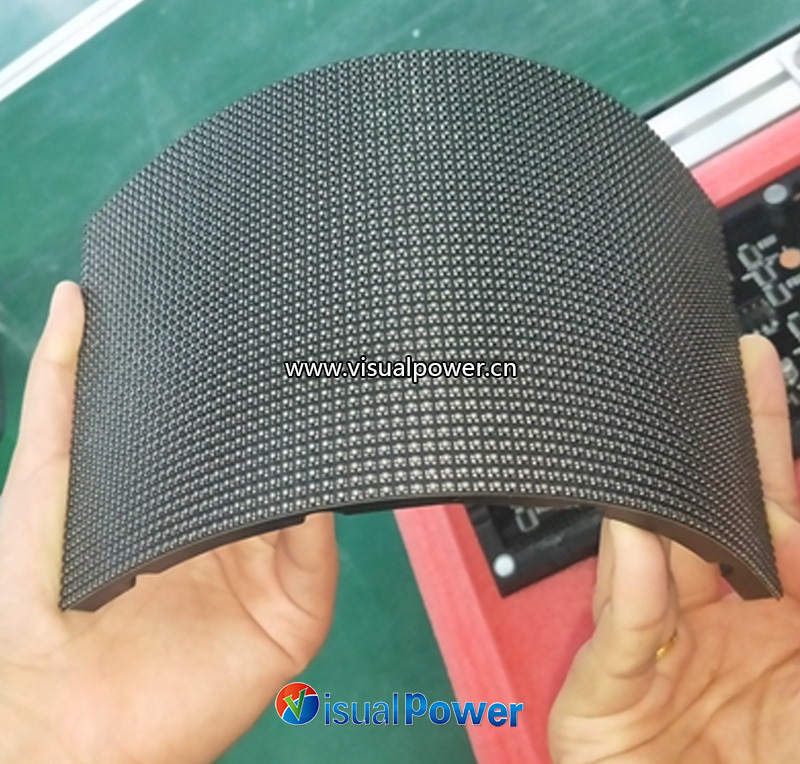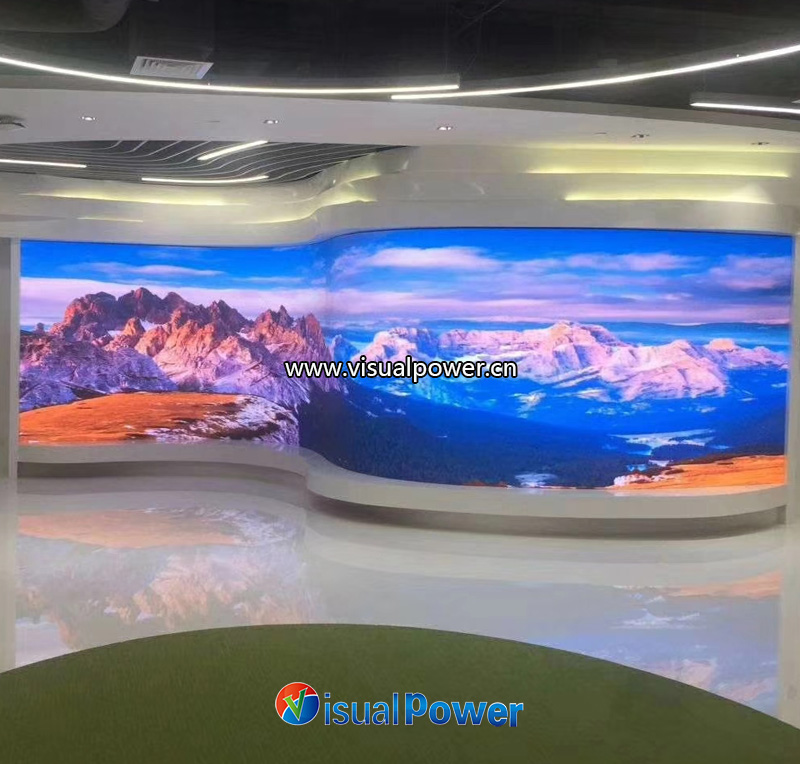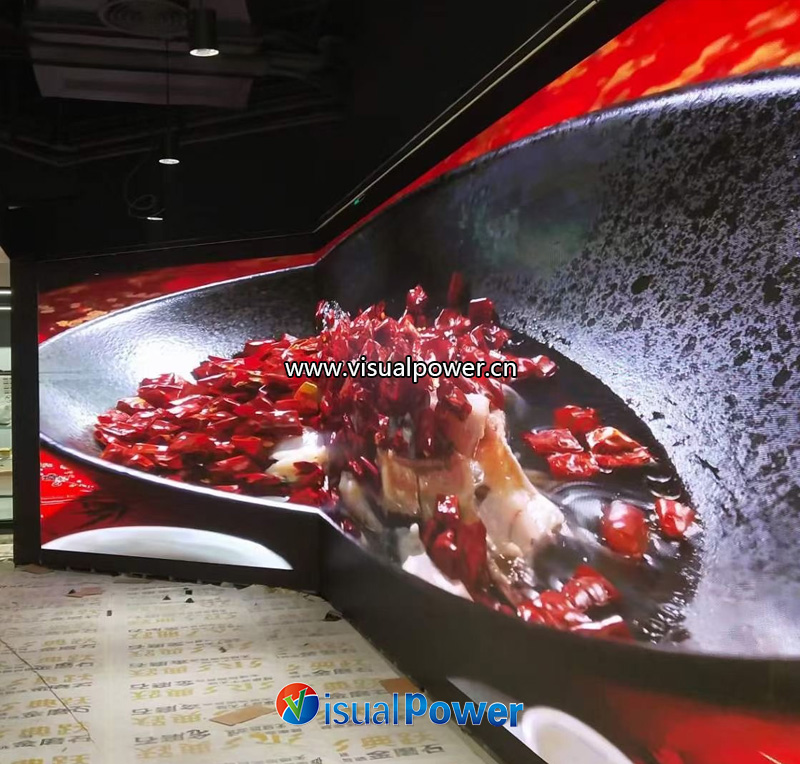Categories
- News (82)
- case study (6)
Flexible LED Display: A Technological Wonder or a Redemption for Designers?
To be honest, when I first came into contact with Flexible LED display, I was a little skeptical. Soft screen? Can it bend? Can it still be in high definition? It sounds too much like a “new concept” made up by piling up marketing words. But the moment I first saw the large curved screen that undulated like waves light up on the spot, I shut up.
That screen is the one that looks least like a “monitor” that I have seen in recent years. It’s not eye-catching, but it catches the eye. Not domineering, but capturing people; And on that day, I truly understood one thing: Flexible LED is not for “showing off”, but for “freedom”.

When we were working on display systems in the past, we were always restricted by the structure. No matter how shocking the content is, it eventually has to be stuffed into a square or rectangular “frame”. That feeling is like you have a good idea but have to present it in a report format.
The emergence of Flexible LED has provided an outlet for me, a design enthusiast who loves to tinker and use my brain. Its malleability – not in the theoretical sense, but truly being able to be “stuck” on non-flat surfaces, encircle columns, and even form an entire sphere – is simply a key to the spatial display industry.
The client’s request that time, to put it bluntly, was just one sentence: “Create a popular check-in spot for me where people can take photos and upload them.” Simple and straightforward.
As soon as the design drawings came out, I knew that this was impossible with an ordinary screen. There was no complete wall on the spot and the space was extremely cramped. We had to “wrap” the screen around the outer edge of the staircase, wrap it around once and then extend it upwards. The only option that can handle such scenarios is Flexible LED.
For a full four days, our team hardly slept. The structural framework is manually joined on site. Each module is fixed by magnetic attraction, and then the seams are corrected one by one and the brightness is adjusted. The moment it was illuminated, the staircase seemed to transform into a flowing digital waterfall. When the audience walked in, it was truly as if they had fallen into a mixed reality space.
At that moment, I was really convinced: It wasn’t that it was too powerful, but that no other screen could do this at all.

Many people, upon hearing the word “Flexible”, immediately think it means “soft” or “flexible”, but I would like to say that its true value does not lie in its superficial flexibility, but in its “high integration and low interference”.
When there are many traditional LED modules, controllers, wiring and power management all become more complicated. Most high-end Flexible LED solutions, such as the customized platform visualpower, employ ultra-thin structures and high-density integrated designs, almost minimizing the difficulty of installation and operation and maintenance.
It is particularly suitable for those projects that “want to make a stunning display but are short of both budget and schedule”.
One more point that many people have overlooked: It is really light. A regular 3-square-meter modular screen, with its Flexible structure, can be about 30% lighter than traditional modules. When it comes to hoisting and irregular-shaped assembly, it is incredibly effortless.
Do you think it can do everything? Then you might fall into a trap.
For example, it is afraid of violence. Although the module is soft, it is not an “elastic body”. If it is installed with improper force or deformed by knocking, it will be very painful to level it later.
For instance, content adaptation. Most people hold a Flexible screen but still play “full-screen blockbusters”, which is simply like buying a racing car or a contemporary motor vehicle. What truly touches people about Flexible LED is its delicate “content strategies” such as dynamic arrangement, local vision, and zone interaction. If the original content logic is still simply copied, it will only make people feel that “this screen is a bit of a waste”.

Irregular Spaces: such as atrium hoisting, column wrapping, and stepped facades;
Interactive art: Combining sensing, motion capture or environmental sound feedback to create a flowing display;
Flash mob or touring exhibition: Lightweight and easy to disassemble and assemble, with a high reuse rate;
High-end hotels, science and technology museums, airports and other public areas that “have requirements for spatial aesthetics”.
In these places, there is no need to focus on cost control; instead, it should be “memorable”.
Having written this far, I want to say something from the bottom of my heart
The significance of Flexible LED display is not to have one more product option, but to enable us to tell stories in a new way. Space is inherently emotional, and the ultimate goal of display technology has never been to be bright, but to “understand”.
The longer I stay in this line of work, the more I feel that technology is not a cold formula, but a “tool for expression”. If you are worrying about a display solution that you “don’t want to be too ordinary”, you really can take a look at an excellent Flexible LED project. Not to mention anything else, it might change your understanding of space.